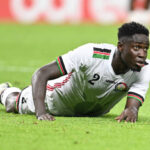While the Harambee Stars continue their journey towards footballing glory, a different team might reach the World Cup summit first: the Harambee Starlets. This isn’t mere speculation, but a reflection of the immense potential simmering within Kenya’s women’s football scene.
This potential, however, needs nurturing. As Kenya gears up for its football administration elections, this open letter serves as a call to action for aspiring leaders. The world stage beckons for the Starlets, but reaching it requires a focused approach that addresses several crucial areas.
Financial Lifeline for the KWPL and Beyond
The top-tier Kenya Women’s Premier League (KWPL) is in dire need of a sponsor. The absence of solid financial backing has forced relegations due to teams’ inability to fulfill fixtures. A quick solution is crucial. Securing a league sponsor, estimated to cost around 65 million Kenyan shillings per season, would greatly alleviate logistical burdens. This could translate to a 500,000 KES monthly grant for each team, empowering them to compete effectively. Additionally, such support would make them more attractive to individual sponsors.
Showcasing the Beautiful Game: Livestreaming and TV Coverage
Women’s football deserves a wider audience. Livestreaming or television coverage for all league matches is a game-changer. Platforms like online streaming services or broadcast partnerships would expose fans to the talent on display, fostering awareness and attracting sponsorships. This, in turn, would open doors to alternative revenue streams for the league and its teams.
Setting the Stage: Match Venues and Timings
While improvements have been made, top-tier women’s matches deserve respectable venues and fan-friendly timings. Shifting away from early or mid-morning kick-offs will encourage spectators to attend, especially for high-profile fixtures.
Rewarding Excellence: Prize Money and End-of-Year Galas
Recognition and reward are vital motivators. Implementing a substantial prize money structure for the KWPL, with the winner receiving at least 10 million KES, would incentivize competition. A tiered structure, rewarding every team down to the bottom of the table, would further bolster morale. This could potentially be managed by a title sponsor. Additionally, monthly and end-of-season awards for outstanding players would create a culture of excellence within the league.
Amplifying Voices: Increased Representation
Currently, women’s teams are woefully underrepresented in decision-making spheres, accounting for less than 5% of the voting pool. This marginalizes their needs. Increasing their representation to at least 25% would ensure their voices are heard and their concerns addressed.
Empowering Leadership: An Independent Women’s League Board
Similar to the Kenya Premier League, a dedicated board composed of women’s team leadership could manage women’s leagues. This would leverage their firsthand knowledge and tailor solutions that best serve their needs. Alternatively, a collaborative approach between the federation and women’s team leaders could lead to optimal outcomes.
Sharpening the Starlets: Increased International Exposure
The Harambee Starlets, like their male counterparts, need more international friendlies and tournaments during international breaks. This would provide invaluable preparation for qualifiers and major competitions.
Protecting the Players: Anti-Harassment Measures
Sexual harassment has tragically forced talented female players to abandon their dreams. Implementing clear rules, laws, and robust enforcement mechanisms would safeguard players and foster professionalism within the sport.
Investing in the Future: Building Female Coaches
The dearth of female coaches is a critical issue. Bolstering programs that train and mentor female coaches is crucial. Many players would undoubtedly prefer female tacticians on their teams’ technical benches, fostering a sense of understanding and shared experience.
Parity on the Pitch: Fairer Player Compensation
The financial disparity between men’s and women’s football is untenable. The highest-paid female player in Kenya earns a meager 15,000-20,000 KES monthly, while most earn below 8,000 KES despite football being their primary source of income. This not only discourages talent development but also leads to players leaving for better opportunities abroad or retiring prematurely. The incoming administration needs to establish a minimum wage that allows female players to navigate financial difficulties and dedicate themselves fully to the sport.
Fair Play Off the Pitch: Contractual Scrutiny
Player welfare demands close attention to contractual agreements. The incoming administration needs to ensure contracts are fair and protect players’ rights.
Empowering Grassroots Teams: Transfer Market Reforms
Currently, grassroots teams don’t benefit from the sale of players to bigger teams unless the transfer happens directly. Amending regulations to ensure they receive a share of the transfer fee would incentivize investment in youth development.
By addressing these crucial areas, Kenyan women’s football can flourish. The Harambee Starlets have the talent, the dedication, and the potential to become a force to be reckoned with on the world stage. With the right leadership and support, they could be the first Kenyan football team to reach the pinnacle of international competition. Let’s ensure their journey is paved with opportunity, not obstacles. The future of Kenyan football is bright, and it’s being led by a team of talented women who deserve the chance to shine. The World Cup beckons, and the Harambee Starlets are ready to answer the call. Will you join them in their quest for glory?





